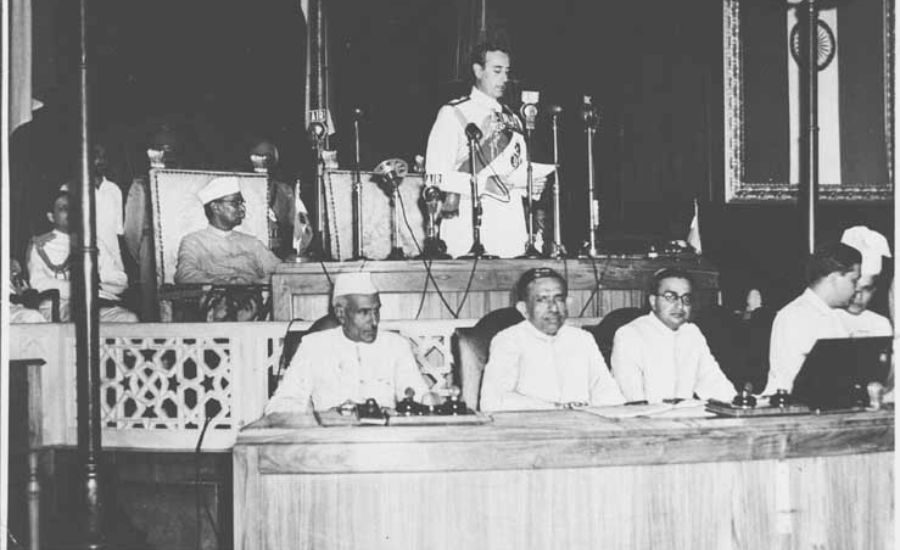
On 14 July 1947, two months since it last met, the Constituent Assembly of India sat down for business, knowing that India would be partitioned. After months and years of political jostling over India’s constitutional future, in May 1947 the British made it clear: partition would happen.
Predictably, deliberations of the Assembly on 14 July saw members referring to political developments in their speeches and what it meant for the Indian constitution-making project. There were three significant strands to these discussions.
First, some members representing the Muslim League and the Princely States, who until now had boycotted the Assembly, finally chose to join the Assembly’s proceedings and began to trickle in. The very first item on the Assembly’s agenda was the signing of the register by these new members. After the President called out the name of the first new member who happened to be from the Muslim League, Deshbandhu Gupta intervened with a point of order: he wanted the new member to first clarify if he ‘still subscribes to the two-nation theory’? Gupta suggested that in light of India’s partition, only those members who subscribed to the Objectives Resolution should be allowed to sign the register and formally join the Assembly.
The President of the Assembly disagreed. As long as a member was duly elected to the Assembly, the President reasoned, the member had every right to join the proceedings. There were other Assembly members however who welcomed members of the Muslim League with open arms.
Second, knowing that partition was on the horizon, some members suggested that certain aspects of the constitutional scheme as reflected in the Objectives Resolution should be reconsidered. K.M. Munshi felt that, in light of partition, ‘…the programme of this Constituent Assembly should be reoriented in the new atmosphere to meet the new situation that has arisen’. He felt that the loose-centre type federal structure that the Assembly was working with, including the federal arrangements like ‘groups’ and ‘sections’, should be dropped; these were meant to placate the Muslim League and keep the doors of the Assembly open to them. Now that Pakistan was going to be a reality, Munshi felt that these federal arrangements should be discarded and India should now have a strong centre.
R.V. Dhulekar suggested another substantive change to the principles embodied in the Objectives Resolution. He seemed to argue that partition justified reconsideration of principles that promised to protect ‘culture, language and civilization’ for all people residing in India. Dhulekar here was implicitly referring to the rights of minorities.
Lastly, there was a sense of urgency in the Assembly on July 14th. The British government, in addition to making it clear that partition would take place also set the date of India’s independence – 15 August 1947. The President of the Assembly argued that after the passing of the Independence Bill, the Constituent Assembly would also become a Legislative Assembly and these legislative functions had to be given adequate attention. So, he hoped that the Constitution would be passed in October of 1947; this would allow the Assembly to focus on and execute its legislative functions. Munshi too argued that a lot of procedures related to Assembly’s work and its decision making had to be simplified and expedited and that the Constitution should be passed as soon as possible.
